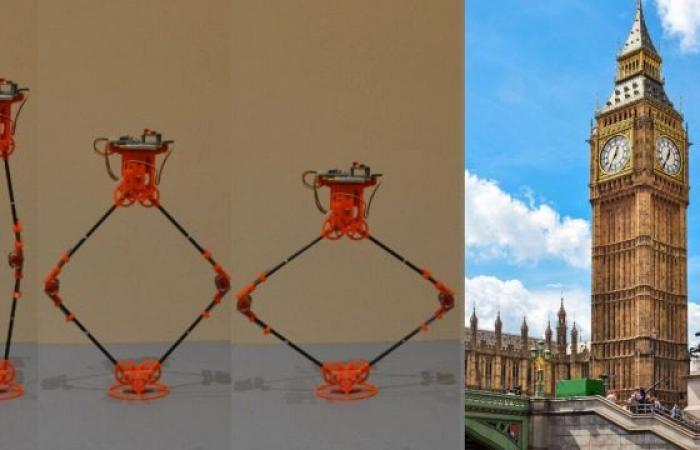A team of engineers from the University of Manchester has managed to create a robot capable of jumping to a record height: over 120 meters. Practically a leap that in height surpasses the Big Ben tower in London.
How does the jumping robot work and what is it used for?
The work, published on Mechanism and Machinecould be useful for planetary exploration, disaster rescue, and surveillance of dangerous or inaccessible areas.
“Robots usually walk or move on wheels, but jumping is an effective way to overcome uneven or obstacle-filled terrain such as caves, forests, boulders or planetary surfaces,” he says. John Loa space robotics expert at the University of Manchester and co-author of the work.
“There are already robots that jump,” he added, “but the challenge is to make them jump high enough to overcome large obstacles. Our project aims to significantly improve the energy efficiency and performance of spring-powered robots.”
The study, in fact, in addition to showing the result of their efforts, also analyzes the limits of the jumping robots developed to date, such as the fact that they take off before releasing all the stored elastic energy or, again, that they often waste energy by moving laterally or rotating instead of climbing vertically. Actions that lead the devices to make inefficient jumps and of limited height.
Using mathematics, computer simulations and laboratory experiments, the researchers have designed a robot with optimal size and structure to overcome obstacles many times higher than itself. According to their calculations it could exceed 120 meterswhich on the Moon, due to the lower gravity, would become 200 meters.
This represents a great improvement over current record high jump for robots, which is 33 metersor 110 times their height. “Our structural redesigns redistribute the robot’s mass toward the top and make the structure thinner toward the bottom,” explains the study’s co-author, aerospace engineer I am Parslew. “Lighter, prism-shaped legs and the use of springs that only stretch are features that improve the performance and energy efficiency of the jumping robot.”
What do robots do today?
But it is not just this little jumping robot that boasts a world record, many other devices have been developed today that have managed to achieve a record.
In May 2024 the robot Mitsubishi Tokufastbotthe brainchild of Mitsubishi Electric, has entered the Guinness Book of Records by solving the Rubik’s Cube in just 0.305 seconds. Practically the blink of an eye.
An impossible time even for the current human world record holder: the American Max Park, in fact, took 3 seconds and 13 tenths to rearrange all the colored faces of the cube.
Among humanoid robots, the latest speed record has been won by Unitree H1 Evolution V3.0from the Chinese company Unitree Robotics. In a recently published video, the bipedal robot runs at a speed never achieved before by a full-scale device: 3.3 meters per second. The robot is equipped with sensors and cameras that allow it to keep the balance when running, but it is better to jog on a flat surface otherwise problems begin.
H1’s new record beats Cassie’s 2022 recordby Agility Robotics: not a true humanoid, but a device that has half a body, only legs, and which had reached a speed of 4 meters per second.
Robots for the home and for dreaming
Finally, even if they do not hold a record, it is impossible not to mention the humanoid robot S1, nicknamed as the home robot or butlerIn the video released by the creator company Astribot you can see it carry out everything independently activity like cooking, gardening, vacuuming, stacking cups, and folding clothes. Videos that have generated a lot of interest, like the one about the giant Gundam-style robot that you can pilot. It’s called Archax is was developed by Japanese startup Tsubame Industries.



